From the Life of Eliza R. Snow
The text briefly mentions that Lorenzo Snow’s sister, Eliza R. Snow, served as president of the Relief Society. As it is highly likely that much of Lorenzo Snow’s knowledge and appreciation for the Relief Society can be credited to his sister, I’ll begin by reviewing her Relief Society service.
Eliza R. Snow was instrumental in the initiation of the Relief Society. She was one of about 12 women whom Sarah Kimball invited to discuss the idea in 1842. Eliza R. Snow then drafted the original constitution for the organization. Reference A After discussing their plan with Joseph Smith, Smith expanded their original vision, telling them:
I will organize the women under the priesthood, after the pattern of the priesthood. –Joseph Smith Reference A
Joseph Smith organized the Relief Society in the format of the priesthood and gave the organization autonomy unparalleled in the modern church. Reference B
[Joseph Smith] propos’d that the Sisters elect a presiding officer to preside over them, and let that presiding officer choose two Counsellors to assist in the duties of her Office— that he would ordain them to preside over the Society— and let them preside just as the Presidency, preside over the church; and if they need his instruction— ask him, he will give it from time to time. Let this Presidency serve as a constitution— all their decisions be considered law; and acted upon as such. If any Officers are wanted to carry out the designs of the Institution, let them be appointed and set apart, as Deacons,Teachers &c. are among us. -Eliza R. Snow quoting Joseph Smith in Nauvoo Relief Society Minutes Reference C
After officially organizing the Relief Society, Joseph Smith gave several lectures to the new Society. In his personal diary, he wrote that he:
gave a lecture on the pries[t]hood shewing how the Sisters would come in possession of the privileges & blessings & gifts of the priesthood & that the signs should follow them. such as healing the sick casting out devils &c. & that they might attain unto these blessings. by a virtuous life & conversation & diligence in keeping all the commandments. -Joseph Smith Reference D
Eliza R. Snow served as secretary of the newly formed Relief Society and took copious notes detailing Relief Society activities and Joseph Smith’s lectures to the Relief Society, now available online as the Nauvoo Relief Society Minute Book. (Read more about the Nauvoo Relief Society here and here.)
After Joseph Smith died in 1844, Brigham Young disbanded the Relief Society, possibly due to conflicts with the ordained president of the Relief Society, Emma Smith, who objected to the practice of polygamy. Reference E Reference F
Sister[s] … have no right to meddle in the affairs of the kingdom of God … [they] never can hold the Priesthood apart from their husbands. When I want Sisters or the Wives of the members of the church to get up Relief Society I will summon them to my aid but until that time let them stay at home & if you see females huddling together veto the concern … and if they say Joseph started it tell them its a damned lie for I know he never encouraged it.–Brigham Young, 1845 Reference B
In spite of Brigham Young’s opposition, Eliza R. Snow and Patty Sessions continued to unofficially hold Relief Society meetings through 1848, while the women were stationed at Winter Quarters and crossing the plains. Reference F After arrival in the Salt Lake Valley, Eliza R. Snow developed an illness, possibly tuberculosis, that precluded public work for several years. Reference F Reference G
In 1855, a group of Utah women began a society similar to the former Relief Society with the primary goal of providing clothing for local Native Americans. Four months after their effort began, Brigham Young made this “proposal” (an interesting choice of words, given that the women in this particular congregation had already been doing this for months.) Reference F Reference H
I propose to the Sisters in this congregation to form themselves into societies to relieve the poor brethren and sustain them. We need not have a poor family. I propose to the women to clothe the Lamanite children and women and cover their nakedness. All the Lamanites will be numbered within this Kingdom in a very few years and they would be as zealous as any other. The sisters should meet in their own wards and it will do them good. –Brigham Young, 1855 Reference F
After Brigham Young’s endorsement, similar societies were developed in other areas of the territory, but most of these efforts were short-lived. Reference F (More information about this time period is available here.)
In 1867, Brigham Young reestablished the Relief Society. He placed the new Relief Society under supervision of the male priesthood rather than parallel to it as in the Nauvoo version of the organization. He appointed Eliza R. Snow to oversee the effort, although she was not officially designated president until 1880, after Emma Smith’s death. Reference E Reference I
Let [the sisters] organize Female Relief Societies in the various wards. We have many talented women among us, and we wish their help in this matter. Some may think this is a trifling thing, but it is not; and you will find that the sisters will be the mainspring of the movement. Give them the benefit of your wisdom and experience, give them your influence, guide and direct them wisely and well, and they will find rooms for the poor and obtain the means for supporting them ten times quicker than even the Bishop could.2 -Brigham Young, 1867 Reference I
The Encyclopedia of Mormonism outlines the administrative accomplishments of the Relief Society under Eliza R. Snow’s direction:
1866-1887. In 1866 President Young initiated Churchwide reorganization of the Relief Society, appointing Eliza R. Snow to assist bishops in establishing the organization in each ward. The minutes that she had recorded in Nauvoo became the common “Constitution” for all local units, providing continuity of name, purpose, and organizational pattern. Though not formally called and set apart as general president until 1880, Eliza R. Snow directed Relief Society work from 1867 until her death in 1887. She was aided by her counselors Zina D. H. Young and Elizabeth Ann Whitney and by the retrenchment society, which served informally as a central board.
By 1880, the Relief Society had 300 local units, and each one cared for the suffering and needy within its ward boundaries, using an expanded corps of visiting teachers to collect and distribute donations. Ward Relief Societies managed their own financial resources, and many of them built their own meeting halls.
The Relief Society engaged in a number of bold and innovative economic activities spurred by the Church’s movement for economic self-sufficiency. Ward societies initiated cooperative enterprises for making and marketing homemade goods, raised silk (see Silk Culture), established a grain storage program with local granaries, and helped finance the medical training of midwives and female doctors. With the support of ward units, the central board established the Deseret hospital (1882-1895). Assuming a new political role, the Relief Society sponsored a series of “indignation meetings” to voice women’s opposition to proposed antipolygamy legislation. After Utah women were enfranchised in 1870, the Relief Society encouraged women to vote. Then they actively campaigned for woman suffrage after they were disfranchised by the federal government in 1887.
The Relief Society helped to organize and nurture the Young Ladies’ Retrenchment Association (later young women) and the primary. Though separate general presidencies were appointed for these groups in 1880, President Eliza R. Snow served as their general head, and she and her board visited local congregations in Utah and Idaho to instruct all three groups. Local visits and conferences, the appointment of stake Relief Society presidents and boards (beginning in 1877), and publication of the semimonthly Woman’s Exponent (1872-1914) strengthened women’s sense of sisterhood. In assuming new responsibilities at ward, stake, and general levels, hundreds of LDS women entered the public sphere, simultaneously strengthening the community and developing their individual talents. Reference J

Eliza R. Snow was not just an administrator; she was the “high priestess” and “prophetess.” In the endowment house, she served in a manner analogous to the modern office of temple matron, although she often offered blessings beyond the scripted ceremonies. Outside the temple, she blessed the sick by laying on of hands, performed washing and anointings for pregnant women, and instructed other women about how to perform these ordinances. She was also known to have the gift of speaking in tongues. An accomplished poet, she often expounded doctrine through poetry, such as Invocation, or the Eternal Father and Mother, which has been included in the modern Hymnal as O My Father. Reference K (You can read more about this time period here.)
How has the work of Eliza R. Snow affected the church today? What can we learn from Eliza R. Snow’s example? How did Brigham Young’s attitudes and policies toward the Relief Society change over time? What might have influenced these changes? Why is it important to learn how women contributed to the history of the church?
Members of the Relief Society exemplify true charity and pure religion.
The mission of the Relief Society is to succor the distressed, to minister to the sick and feeble, to feed the poor, to clothe the naked, and to bless all the sons and daughters of God. No institution was ever founded with a nobler aim. Its basis is true charity, which is the pure love of Christ [see Moroni 7:47], and that spirit has been manifested in all the ministrations of the Society among the people. The Apostle James said that “pure religion and undefiled before God and the Father is this: To visit the fatherless and widows in their affliction, and to keep himself unspotted from the world.” [James 1:27.] Accepting that as true, the members of the Relief Society have most surely exemplified in their lives pure and undefiled religion; for they have ministered to those in affliction, they have thrown their arms of love around the fatherless and the widows, and they have kept themselves unspotted from the world. I can testify that there are no purer and more God-fearing women in the world than are to be found within the ranks of the Relief Society. -Lorenzo Snow 2 Reference L
How did the Relief Society fulfill this mission during the lifetimes of Eliza and Lorenzo Snow? How does the Relief Society fulfill this mission today? Think of a time when Relief Society sisters helped you or someone you know. How have such actions influenced your life?
From the Life of Lorenzo Snow
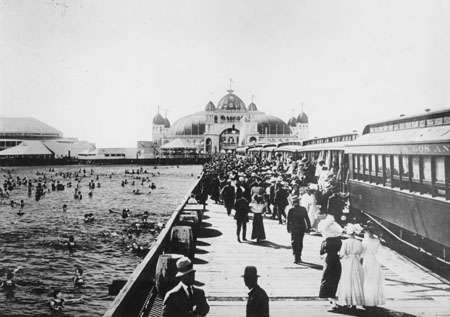
This lesson is unusual for the Teachings of the Presidents of the Church series. Most of these lessons include quotes drawn from a wide variety of sources and time periods. This lesson almost exclusively draws from a 1901 speech at a Relief Society excursion to Saltair Resort, which was printed in the Deseret Evening News on July 1, 1901. The article is titled, Prest. Snow to Relief Societies: Their Good Work—Have $100,000 in Property and 103,783 Bushels of Grain and Some Flour For Times of Need. The full text is available here: Reference L
He began the speech:
I appreciate the privilege of being able to spend an hour or two in your company this afternoon, and I trust you are all enjoying yourselves today. Proper recreation and amusement are good things, and I am glad to see you sisters indulging in a little rest and recreation, for you who work so hard day after day in your homes and in the Relief Society certainly deserve all the enjoyment you can get. -Lorenzo Snow Reference L
Why is it important to rest from labor? What are some good ways to reward ourselves for hard work?
He then referred to the womens’ support of the Church’s missionary program. In that time, married men often were called to serve full-time missions, leaving their wives to financially support their families.
It is difficult to imagine what we should have done, or what progress the work of the Lord would have made, without [the women of the church]. When we [brethren] have been absent on foreign missions, their missions at home have generally been no less arduous than ours abroad; and in the midst of trial and privation they have exhibited a patience, a fortitude and a self-help that has been truly inspiring. Thank God for the women of this Church! That is the way I feel today as I join in this assembly. 1 -Lorenzo Snow Reference L
What are some of the ways family members support people with demanding church callings today? How can ward members support these families?
Relief Society sisters work with priesthood holders to advance the interests of the kingdom of God.
Lorenzo Snow continued his speech, noting that not only were women responsible for providing for their families while their husbands were abroad conducting missionary service, but were also engaged in a number of financial projects for benefit of the church:
I understand that one of the objects of this excursion is to raise funds towards the proposed women’s building in Salt Lake City…that will be suitable as headquarters for the Relief Society, the Young Ladles Mutual Improvement Association, and the Primary Association…I am glad to note that you are making strenuous exertions to raise the requisite means for this purpose and if you are united in your feelings, I do not think you will find it a hard task. I would encourage every member of these organizations to assist in this work. I would also invite every Bishop to assist you in obtaining sufficient means to erect a magnificent edifice that shall reflect credit upon our women and attract the admiring gaze of the great and noble of all nations who may visit Zion. I am told that a number of ladies who are not members of the Church have generously contributed towards the building much to the gratification and appreciation of those who have the matter in hand, and this ought to prove a stimulus to those who are in the Church. I hope to see a handsome structure reared and I anticipate soon having the pleasure of meeting with you in it. Success to you in your effort in this direction…You are now 30,000 strong, I am told, with a building fund of nearly $5,000 and with upwards of $100,000 worth of property in your possession…In addition to this, you are the only ones among the Saints who are doing anything in a financial way against a day of famine. Your work in this direction is most commendable and I hear as a result that you have 103,783 bushels of grain, together with an amount of flour and beans, safely stored away against a time of need, as well as $3,331 to expend for the same purpose. I understand that in some few instances your labors in this direction have been interfered with but I hope that hereafter there will be no occasion for complaint on that point. -Lorenzo Snow Reference L
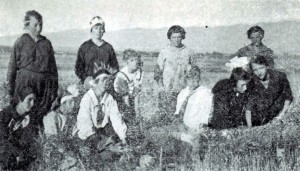
At this time in history, the Relief Society functioned essentially as its own company, with responsibility to raise its own funds and authority over how these funds were spent. The Relief Society grain storage program began in 1876. Emmeline B. Wells, who would later serve as General Relief Society President, was called to lead the program during the administrations of Brigham Young and Eliza R Snow. The Relief Society raised funds to buy or grow grain and build storage facilities. Just two years before this speech was delivered, the wheat storage program had proven useful during a severe drought. Reference I Reference M
The “interference” Lorenzo Snow referred to was frequent and ongoing attempts by local bishops to access Relief Society assets for local projects. Lorenzo Snow was true to his word about not interfering with the Relief Society’s grain program, but his successor, Joseph F. Smith, had a different vision for the Church in which there would “not be so much necessity for work that is now being done by the auxiliary organizations because it will be done by the regular quorum of the Priesthood.” Under his administration, priesthood leaders became more involved in the grain program, although primary responsibility for it continued to rest with the Relief Society. During World War I in 1918, the government of the United States of America requested to purchase the grain to address worldwide grain shortages. Without consulting the Relief Society General Presidency, the First Presidency and the Presiding Bishopric agreed to sell the grain. After learning of the transaction, the Relief Society General President, Emmeline B. Wells, expressed that she agreed with the decision to sell to the government but objected to how Relief Society assets were sold without permission of the Relief Society. The presiding bishop apologized, but moving forward, final decision-making authority about the grain program was shifted from the General Relief Society Presidency toward the Presiding Bishopric. Reference M
This pattern of shifting financial authority away from the Relief Society and toward priesthood holders continued in the decades that followed. In 1978, in response to the comprehensive Church correlation program, an effort “to place the priesthood of God where the Lord said it was to be—as the center and core of the church and kingdom of God,” the Relief Society transferred 266,291 bushels of wheat and nearly 2 million dollars in assets to the First Presidency. Reference N Reference O Reference J In 2010, the Church Handbook of Instruction included a new provision excluding women from callings as financial auditors. Reference P
What can we learn from the early Relief Society’s efforts to maintain financial viability and prepare “against a day of famine”? What can we do today to follow their example? How can Relief Society sisters and priesthood holders improve collaboration in operating church programs?
It has always been a source of pleasure to me to notice how faithfully you sisters of the Relief Society have stood by the servants of the Lord under all circumstances. You have ever been found at the side of the Priesthood, ready to strengthen their hands and to do your part in helping to advance the interests of the kingdom of God; and as you have shared in these labors, so you will most certainly share in the triumph of the work and in the exaltation and glory which the Lord will give to His faithful children…No wise Bishop will fail to appreciate the labors of the Relief Society in his ward. What could a Bishop do without a Relief Society? I would say to all the Bishops in the Church, encourage the sisters of the Relief Society, and support them in their work of charity and benevolence, and they will prove a blessing to you and to the people.3 -Lorenzo Snow Reference L
What examples have you witnessed of Relief Society sisters and priesthood holders working well together?
As the Church grows, Relief Society sisters will have greater opportunities to serve.
The future of the [Relief] Society is full of promise. As the Church grows, its field of usefulness will be correspondingly enlarged, and it will be even more potent for good than it has been in the past. If all the sisters will rally to the support of the society, it will accomplish a mighty work and be a continued blessing unto the Church. 5 -Lorenzo Snow Reference L
Do you think this prediction by Lorenzo Snow has come to pass? Why or why not? What can Relief Society sisters do today to increase in their influence for good? How can wards, branches and stakes better utilize the talents of Relief Society sisters?
It is good to have the influence of the Relief Society in every home.
…It would be a good thing to have the influence of this organization in every home…It would be gratifying to see the middle-aged as interested in this institution as the aged, and by becoming so they will find that it will strengthen their faith, give them broader ideas of life and its responsibilities, and advance them materially along the path of progress and perfection.5 -Lorenzo Snow Reference L
At the time of Lorenzo Snow, LDS women had the option of choosing to join the Relief Society. Since September 1971, all LDS women have been automatically enrolled in the Relief Society. Reference J While membership in Relief Society is now automatic, participation is not. In 2003, General Relief Society President Bonnie D. Parkin challenged Relief Society members to be more welcoming to younger women. Reference Q
Ultimately, all women—young or old, Primary and Young Women leaders—are members of Relief Society. And all women have the responsibility of helping our young adult sisters recognize that they, too, have a place in Relief Society. We need to become acquainted with each girl, learn her name, learn about her activities and interests, and make every effort to enfold her into our sisterhood before she turns 18. These transitioning young adult women should enter Relief Society already having older friends who know them, love them, and are ready to receive them. -Bonnie D. Parkin Reference Q
What was your experience transitioning into Relief Society? How have you seen success at involving women of different generations in Relief Society?



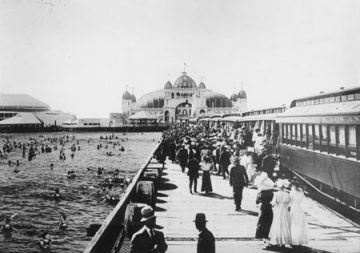
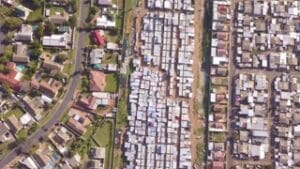
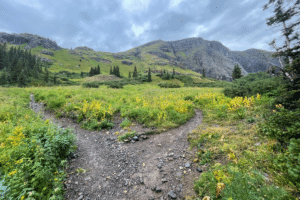
17 Responses
Thank you for this lesson. I feel like I will use the quotes and supplementary resources beyond just the scope of this lesson (since I”m not in RS anyway). Reading about the real history of the Relief Society is so empowering and it makes me want to participate in the organization.
Learning more of the Relief Society’s true history makes me feel empowered too. I want desperately for the Relief Society to be what it was, in my time, and am grateful for women like Laurel Ulrich who have made it be that for them, and shown me that it is possible.
I love that this lesson has so much meaty history. Thank you for taking the time to do all this research, April.
This is beautiful and brilliant, April. Thanks for going the hard yards to make a really awesome lesson. I really hope as many church members as possible will read and learn from this lesson plan.
Thank you for the time and thought you put into this lesson outline, April. And thank you especially for including more of the context about the history of the Relief Society. During the last few years I have grown in admiration for Eliza R. Snow and her rich contributions to the women (and men) in the Church. I loved learning that her three known titles were “Prophetess, Priestess, and Poetess,” and was happy you included them. The many stories of women healers are also inspiring to me, as they convey women embracing and using the gifts of the spirit they have been given.
I echo the thoughts of those shared in regards to sharing more of the history of Relief Society – thank you for your efforts!
I also appreciated mentioning family members who have demanding church callings and how ward members can support them. What a great topic that doesn’t come up too often. Thank you!
I will be using much of what’s included in this lesson for my class tomorrow. Thank you for all the resources!!
[…] From the Life of Eliza R. Snow by April at Exponent […]
My partner and I stumbled over here from a different web address and thought I might as well
check things out. I like what I see so now i’m following you. Look forward to looking at your web page for a second time.
Thank you for this. I am brand new at teaching RS and this is my next lesson in a couple of weeks. I am still quite young and learning a lot myself so this helps a lot. Is this your actual lesson plan? Do you typically do a lot of reading and then stopping for questions? I appreciate all you’ve done.
That is a good question. This lesson is actually much longer than the lesson I would actually present. In actual class, I would choose a few ideas to focus on from the available material and I would summarize much of the history in my own words. I may not present all of the history, but I would still study it so that I could be prepared for class questions.
[…] extensive sphere of action,” that included activities in the areas of welfare services, agriculture, merchandise, medicine, politics, publishing, education, real estate, and supervising the Young […]